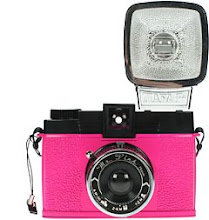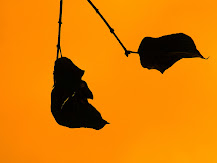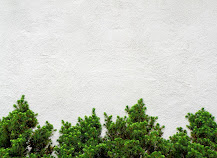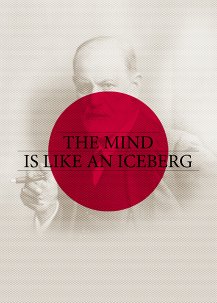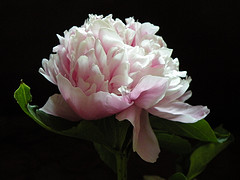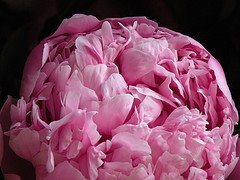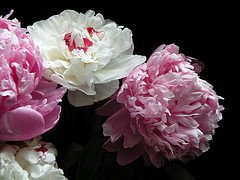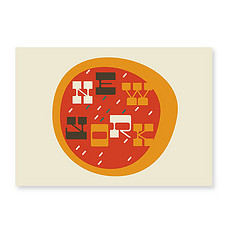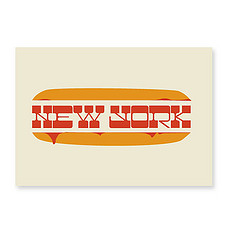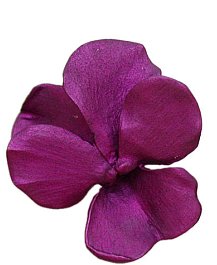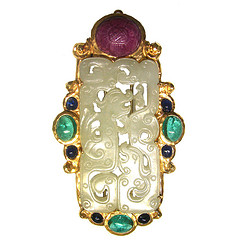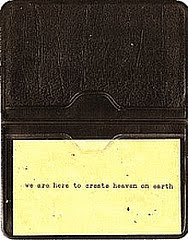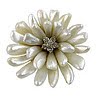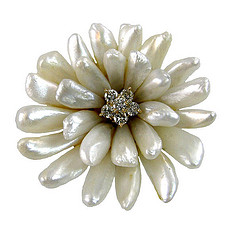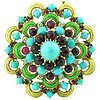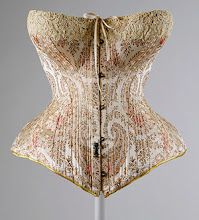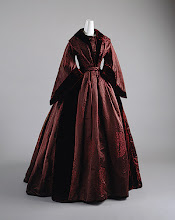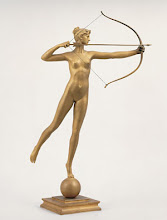I look forward to the end-of-year Lives They Lived issue of The Times Magazine. I save my copies and refer to them occasionally (that sounds way too Andy Rooney). The issue doesn’t try to be a definitive document of the lives and deaths of the most important or influential. Instead, it’s largely devoted to an idiosyncratic bunch who are often following their own passions and curiosities. There are typically some big names, but there are also many minor characters.
This year, in the spirit of lives well lived, I offer a remembrance and special obituary - for our Bob, who died on October 2 at the age of 15. His was a fascinating personality: at once dark, sweet, neurotic, apathetic, playful, diabolical. The vet would invariably ask about Bob's behavior at home, given his surprise Ninjutsu moves while undergoing examination or light-sedation medical procedure at the clinic; Bob was typically greeted at the vet's office by his "special team." But on his own turf, at home, he was a total love...mostly...except for the period (~ '94-'98) when Bob had a rivalry with my husband that left one of them scratched and bloodied from knees down after many a middle-of-the-night scuffle.
During the last few years of his life, Bobby was on a strict medication regimen (not unlike others of us!) and required daily care. We followed the prescribed course with a good bit of discipline. But we believe that it was our daughter's giftedness with animals and profound love for her darling (and quite fabulous) chat noir that kept him going - and likely extended his happy life by months, and maybe years. She doted on him. And he adored her right back.
Bob. We miss you something awful.
.
12.31.2007
the life he lived
12.30.2007
12.25.2007
on the first day of Christmas

That would be today.
The Twelve Days of Christmas is probably the most misunderstood part of the church year among Christians who are not familiar with liturgical church traditions. Contrary to much popular belief, these are not the 12 days before Christmas, but (in most of the Western liturgy) are the 12 days from Christmas until the beginning of Epiphany (January 6th; the 12 days count from December 25th until January 5th). In some traditions, the first day of Christmas begins on the evening of December 25th - with the 12 days beginning December 26th - and includes Epiphany on January 6th.
(Note to reader: If you've had enough already with the pseudodidactic text, scroll down to post's end.)
And then we have Russian and other Eastern Orthodox religions which celebrate Christmas 13 days after western Christmas, on January 7th, in accordance with the old Julian calendar. (We'll get to that another time. Probably right around January 7th, in all likelihood.) The rest of the calendar is pushed back as well, setting the observation of Epiphany or Theophany on January 19th.
The origin and counting of the Twelve Days is complicated, and is related to differences in calendars, church traditions and ways to observe this holy day in various cultures. In the Western tradition, Epiphany is usually celebrated as the time the wise men - or Magi - arrived to present gifts to the young Jesus (Matthew 2:1-12). Traditionally there were three Magi, probably determined by the three gifts, even though the biblical narrative never says how many Magi came.
By the 16th century, some European and Scandinavian cultures had combined the Twelve Days of Christmas with festivals celebrating the changing of the year. These were usually associated with driving away evil spirits for the start of the new year.
The Twelfth Night is January 5th, the last day of the Christmas season before Epiphany. In some church traditions, January 5th is considered the eleventh day of Christmas, while the evening of January 5th is still counted as the Twelfth Night. Twelfth Night celebrations often include feasting along with the removal of Christmas decorations. French and English celebrations of Twelfth Night include a King's Cake and ale or wine - and remembering the visit of the Magi.
And then there's the song. "The Twelve Days of Christmas" is seen by many as a delightful (or annoying - or both) bit of nonsensical holiday verse set to music. Perhaps that's the beginning and end of it. However, some have suggested that it's a song of Christian instruction dating to the 16th century religious wars in England, with hidden references to the basic teachings of the faith; they contend that it was a mnemonic device to teach the catechism to youngsters. The "true love" mentioned in the song is not an earthly suitor, but refers to God Himself. The "me" who receives the presents refers to every baptized person who is part of the Christian tradition. Each of the "days" represents some aspect of the Christian faith that was important for children to learn. But many have questioned the historical accuracy of this origin of the song. There is little evidence available either way.
For our part, the Twelve Days (and then some) provide a great excuse to maintain decked halls well into the New Year. My family (of origin) has famously gathered 'round a decorated Christmas tree in...um...April. I've been informed that when/if we visit my parents in February or March 2008, we'll be dining in the company of nutcrackers and the Della Robbia wreath. My family (of now) not-so-famously keeps our baseline yule decor (large glass ornaments suspended from satin ribbon hung in a wide interior archway) on display year-round. I also play Christmas music in August. And May. And whenever I like, which is a lot of the time. (This disclosure is diagnostic, I admit; I prefer to label myself and my clan as eccentric(s). It's also my blog version of personal anecdote.) I think the whole (crazy, in our case) extension of the Season has all kinds of deep-seated motives; none of mine will be revealed or explored here (not to worry). For now, I'll borrow some familiar words that perfectly express the notion that what and where we have been carry us to where and who we are - and will be:I will honour Christmas in my heart, and try to keep it all the year. I will live in the Past, the Present, and the Future. The Spirits of all Three shall strive within me. I will not shut out the lessons they teach.
:images metropolitan museum of art; dianamuse.
12.24.2007
12.23.2007
12.22.2007
12.21.2007



The intent and beauty of these inspired paintings manifest the things of my grateful heart on this special day.
Good weekend - and joyful holidays to you and yours.
:thanks to geninne for permission to post her artwork. the actual prints are even more brilliantly colored than they appear here. visit geninne at her virtual workshop. magical.
12.13.2007
and the tony goes to...
Resistance. Is. Futile. I just have to offer another homage to Tony Duquette, the brilliant and eccentric California designer of interiors, stage sets and jewelry. Some of you posted such wonderful tributes, I hesitated to keep it going here. I got over it. To my mind, we'd do well to keep Duquette's obsessive, audacious, transform-the-pedestrian-into-something-beautiful-and-splendid vision front and center--a source of daily inspiration.
I'm weaving together some shots I took of the Duquette-influenced BG windows with some of Guy Trebay's words (pilfered from his TD piece that appeared in The Times this fall).
In 1999, the last time Tony Duquette was rediscovered, Amy Spindler, the style editor of The New York Times Magazine, made an observation in [The Times] that still rings true. “When a Banana Republic catalog starts to look like the trendy, vacuous pages of Wallpaper, and Club Monaco is indistinguishable from Prada,” she wrote, “you know it’s time for high style to move on.”
But an era of baroque theatrics in fashion and design, which Ms. Spindler suggested a Duquette comeback might inspire, never quite materialized. “A coral branch on a coffee table does not a Duquette make,” as the interior designer Jeffrey Bilhuber said. Mr. Duquette died in late 1999 at 85, and what followed in the design world was, if not uniformly pedestrian, somehow lacking the rococo whimsy for which he was renowned.
Rather than the fantastical visions Duquette conjured up for clients with the movie sets he designed for Vincente Minnelli, the jewelry he made for the Duchess of Windsor and interiors he created for, among others, Mary Pickford and Doris Duke, consumers were delivered into what Louis Bofferding, an antiquarian and style columnist, called the era of “the square lampshade, of boring beige and white.” Those trendy vacuous pages of Wallpaper turned out to be a visual template for a lot of designers.
With the arrival [this month] of Tony Duquette, a hefty lavish monograph on the late designer, the style world may be getting a kind of gilt-edged Post-it note, an overdue reminder to a market dominated by monotonous status goods that nothing is quite so luxurious as an individual eye. “There is way too much out there that feels corporately and central-office driven,” said Linda Fargo, the fashion director at Bergdorf Goodman, the Fifth Avenue retailer whose Christmas windows are inspired by Duquette’s vision, as rendered in scenarios that are part Elsie de Wolfe and part Brothers Grimm.
“Tony always said he was about beauty and not luxury, if you’re going to define luxury by cost,” Ms. Fargo said. Enthusiastic about raiding the storehouses of the past for his projects, Duquette was also audacious in his use of shoestring effects to set off important antiques. “He was Rumpelstiltskin spinning gold from straw,” said Ms. Fargo, echoing Tom Ford’s observation that only Mr. Duquette could see a piece of junk and imagine a pagoda.
Hutton Wilkinson, who wrote Tony Duquette with Wendy Goodman, the design director of House & Garden, says that where some people saw a hubcap, Duquette saw a shining disc to set in the middle of an improvised sunburst.
“Tony was no label lover,” Mr. Wilkinson said. “His attitude was that the last definition of luxury was that it’s just for you.” It was not mass production that Duquette resisted; it was the dumbing-down of style. “The democratization of style and design may be a fantastic thing,” Ms. Goodman said. “But while there’s a level of accessibility now, there’s also a kind of standardization he disliked.”
In his jewelry designs, he balked at the notion that everything revolved around the gem. “I love his approach to doing real jewelry in the spirit of fake jewelry,” said Victoire de Castellane, the designer of playful jewels for Dior. “His approach was not to be enslaved by materials, to be concerned first with the creative effect. He combined gems, cut stones and rough gems, forgetting their value,” Ms. de Castellane said. “They were completely crazy, mixes of real coral with amber and pink quartz, associations with colors that were audacious, odd, maybe not in such good taste, but never bourgeois.”
“Duquette’s work was either haute Bohemian or Bohemian masquerading as haute,” Mr. Bofferding said. “You did not necessarily want to see it by the light of day.” Still, he added: “the vision was informed and full of historical reference. And he looked at things as an artist does,” with an emphasis on color and texture and aesthetics instead of price tags.
“Tony really sprung out of nowhere,” said Ms. Goodman, which is to say tiny Three Rivers, Mich., by way of early 20th-century Los Angeles. “He was of the culture of make-believe,” she added, referring to studio-era Hollywood, where Duquette’s work was enthusiastically taken up by the movie people who also formed a social set around him and his wife.
Duquette, like his early mentor, the decorator Elsie de Wolfe, had both the moxie and the unfettered, rule-breaking approach typical of certain self inventions. “Elsie de Wolfe always said, ‘I was born an ugly child in an ugly age,’ and so she committed herself to creating beauty,” Ms. Goodman said. Having taken the same inventory, Duquette arrived at a similar resolve. “He was channeling something, putting all his references into the blender of his imagination,” Ms. Goodman said. “He believed more than anything that people had access to things they were not aware of.”
Young designers looking to shake off the more deadening aspects of an increasingly corporate design culture might learn a lot from Duquette, Ms. Goodman said. “It’s like: ‘Wait a minute, those things I thought about, I can do them,’” she said. “‘I can do things in an unorthodox way. I can be a mess.’”

:bottom two images of duquette's home, dawnridge, courtesy of the times. all others d:m.
12.11.2007
objet i.d.
I'm offering more letterpress love to the first caller who accurately identifies the location of this festively beribboned beauty.
Two clues: Outdoors. NYC.Brava, P. [I see you've been spending some time of late in the Bryant Park vicinity - in and around the planters in particular. Ahem.] The planter in the i.d. shot is set just below and east of one of the Great Lions of the NYPL (see next image). Ms. P, although you weren't the only respondent to answer correctly, you certainly were the first. So, look to the mailbox for some letterpress goodness.
Bonus treat: a bit of NYPL Leo trivia. The lions' nicknames have changed over the decades. First they were called Leo Astor and Leo Lenox, after The New York Public Library founders John Jacob Astor and James Lenox. Later, they were known as Lady Astor and Lord Lenox (even though they are both male lions). During the 1930s, Mayor Fiorello LaGuardia named them Patience and Fortitude, for the qualities he felt New Yorkers would need to survive the economic depression. These names have stood the test of time: Patience still guards the south side of the Library's steps and Fortitude sits unwaveringly to the north. Fortitude is pictured here.
Happy, joyous, merry and bright to all.
:images dianamuse
12.10.2007
neue galerie: klimt retrospective

"Gustav Klimt: The Ronald S. Lauder and Serge Sabarsky Collections,” with eight paintings and more than 120 drawings by the controversial artist, is on view at the Neue Galerie through June 2008. The exhibition also features a reconstruction, with original furnishings, of the receiving parlor from the second Klimt studio.
The show is the first museum retrospective of the work of Gustav Klimt ever held in the United States (I find this hard to believe). Klimt was little known in the United States during the first half of the twentieth century. In the decades immediately following his death, there was virtually no American interest in the artist. His reputation gradually began to grow in the 1960s, with Klimt eventually reaching cult status.
You'll enjoy Michael Kimmelman's fascinating article, published in The Times last year:
Gustav Klimt's 1907 portrait of Adele Bloch-Bauer...is now aptly installed like a trophy head above the mantelpiece in Mr. Lauder’s Neue Galerie for German and Austrian art. Jon Stewart was joking on “The Daily Show” the other night about what that little green patch in the corner of the picture must be worth. You can’t buy publicity like that.
Well, maybe Mr. Lauder could. The portrait cost him the equivalent of the combined gross domestic products of Kiribati and São Tomé and Principe.
It’s a large, hallucinatory square of spectacular gold filigree. Adele looks almost as if she has inserted her head into one of those carnival cutouts, her thin face partly cast in shadow, obscured by the glare. Her lips are parted, eyelids heavy, cheeks pink. The eyes are two big, brown almonds. The overstuffed headrest of her chair makes a halo of beetle-wing delicacy. Monogrammed, her gown undulates with gently raised letters.
And that green patch Mr. Stewart likes so much is a glimpse of emerald floor, thrusting the picture into depth. The coup de grâce is a spider web of hands, a classic Klimt touch of decadence, clasped so that one wrist bends at a rakish right angle.
She’s half queen, half Vegas showgirl. The perfect New Yorker.
It would be churlish of art lovers in the city not to thank Mr. Lauder for the portrait that for decades was a Viennese civic symbol. Its passage, there to here, is quite a saga. Ferdinand Bloch-Bauer, a wealthy Jewish industrialist, commissioned Klimt to paint his wife, twice. Klimt obliged, so the story goes, by making her his mistress. Public-spirited, she willed her art to Austria. Then she died of meningitis, at 43, in 1925.
Ferdinand had to flee the Nazis 13 years later. They seized the family’s paintings; the family castle in Bohemia went to Reinhard Heydrich, the murderer of Wannsee; the family home in Vienna went to the Austrian national railway, which shipped Jews to the camps; and the diamond choker that Adele is wearing in the portrait went to Hermann Goering for his wife. Hitler apparently balked at acquiring the family porcelain. Too expensive, he said.
And then, for more than 60 years, the Austrian government refused to return the paintings to the family, although Ferdinand had redone Adele’s will. Led by his niece, Maria Altmann, now 90 and living in Los Angeles, the Bloch-Bauer heirs finally won a court battle in January.
In a nod to the city where she settled (her lawyer, by the way, is the grandson of another exile in Hollywood, Arnold Schoenberg), Mrs. Altmann lent the pictures to the Los Angeles County Museum of Art in April. Meanwhile, Mr. Lauder was negotiating the purchase of Adele, and arranging for this show to stop here.
It includes the second Adele, painted in 1912. No longer gold and Byzantine with Egyptian flourishes, instead flowery, sketchier and brightly colored, like a Japanese print, she wears a halo made out of the brim of a huge black hat. Her dress is high-collared, not off the shoulder, her body face-forward and erect, a slender, sinuous Coke bottle shape, more chaste than carnal. This older Adele gazes at some spot just over our heads — she’s still regal but less Vegas. More Aubrey Beardsley via Edith Wharton.
The other Bloch-Bauer pictures are landscapes; the earliest one, from 1903, of a birch forest, is exquisite: an archetypal Klimt mix of uncanny naturalism and geometric abstraction. Its forest floor makes a mosaic of Pointillist dots, broken up by irregular vertical stripes of perfectly real trees receding into idyllic space. For Klimt, bodies were erotic, nervous subjects, ripe for pornography; landscapes were Edenic.
The Bloch-Bauers also acquired a picture he painted of an apple tree and an unfinished jigsaw-puzzle view of houses on the shore of the Attersee, where he spent summer vacations. Neither is great. But like the two Adele portraits, they raise the question whether, had he not died at 55, in 1918, Klimt would have ended up a pure abstractionist like Mondrian.
The four pictures are on the market, Mrs. Altmann has said. She and her relatives are cashing in, which is their right. They offered the Austrian government a chance to buy the whole collection for about the money that Mr. Lauder reportedly spent on Adele.
The Austrians balked. Too expensive, they said.
When the Metropolitan spent $5.5 million on Velazquez’s portrait of Juan de Pareja in 1970, it was a scandal; now it seems cheap for one of the great paintings in the country. The sums that places like the Museum of Modern Art squander on mediocre buildings, which become obsolete the moment they open, are scandalous.
The art market operates according to its own logic, which may have nothing to do with the quality of the art. Value is not price — whether the issue is a Klimt, or a ballplayer, or a chief executive paid millions of dollars, who runs his company into the ground.
But Oscar Wilde had it right about cynics, price and value. It’s only natural to play the skeptic when the art world is a circus of profligacy, drunk with cash, and when dimwitted speculators make headlines, wasting fortunes on bad art. Who knows what the most money paid in private for a painting really is: maybe $135 million. For that amount, assuming it is what Mr. Lauder paid, his portrait of Adele, a hedonistic masterpiece, will be talked about in terms of how many lives might have been saved or how many lifted from poverty for this sum.
As for the border separating public interest from private enterprise, it has never been fixed. The Neue Galerie is Christie’s annex now, exhibiting paintings for sale ($15 general admission, no children under 12 allowed), whose display is also a public service.
Someday Adele will be seen for just what she is: beautiful, a gift to the city. And $135 million may even come to look like a bargain.

Besides paintings and drawings, the exhibition contains rare vintage documentary material, ranging from letters, photographs, and personal effects, such as the artist’s cufflinks and seal (both designed by the architect Josef Hoffmann), to the only known surviving example of the painting smock that Klimt wore.
As a special addition to the exhibition, the Neue Galerie is presenting the re-created interior—based on original floor plans and a 1912 photograph—of the receiving room from Klimt’s studio at Josefstädter Strasse 21, Vienna, which was occupied by the artist from 1892 until the summer of 1912. The display includes the original furnishings designed by Josef Hoffmann, executed by the Wiener Werkstätte.
On the lower level of the museum is a display of children’s drawings created by students in Vienna, ages 10 to 14. The drawings are based on the departure from Austria of the Klimt painting Adele Bloch-Bauer I. They are presented at the Neue Galerie under the title “Adele Comes to America.”
:neue galerie, 1048 fifth avenue, at 86th street; (212) 628-6200 or the neuegalerie website.
12.08.2007
12.07.2007
what can i give [you]?

I accepted the lovely invitation from studio wellspring to participate in a holiday 'pay-it-forward' gift give. (I just received the prettiest handmade paper ornament in the mail from sw. Thank you!) And now it's my turn to move the good cheer along. I will send a handmade (or vintage - I'm taking liberties) gift to each and every blog-reading reveller who leaves a comment here or via e and promises to accept a gift from me and to extend the same invitation, in turn, on her/his/their own blog.
:image david zellaby flikr.
12.04.2007
light one candle...
12.03.2007
o the holly she bears a berry*

Is she the genesis of the green & red tradition? Theories abound.
Holly, the most important of the English evergreens, with its glossy green leaves and clusters of brilliant scarlet berries, is closely connected with the festivities of Christmas.
Here's a tiny bit of holly lore (along with my own mini-tribute to the green & red in quick snaps - random still lifes shot this morning in our living room):
Christmas decorations are said to be derived from a custom observed by the Romans of sending boughs, accompanied by other gifts, to their friends during the festival of the Saturnalia, a custom the early Christians adopted. A subsequent edict of the Church of Bracara forbade Christians from decorating their houses at Christmas with green boughs at the same time as the pagans, the Saturnalia commencing about a week before Christmas. The origin of yule-decor has also been traced to the Druids, who decorated their huts with evergreens during winter, providing shelter to the fairies.
An old legend declares that the holly first sprang up under the footsteps of Christ, and its thorny leaves and scarlet berries, like drops of blood, are considered symbolic of His sufferings; the tree is called 'Christ's Thorn' in northern European countries. It's perhaps in connection with these legends that the tree was called the Holy Tree, as it is generally named by older English writers. Turner, for instance, refers to it by this name in his Herbal, published in 1568. Holly is known by other names: Hulver, Holme, Hulver Bush, Holme Chase.
Pliny describes holly under the name of Ilex aquifolium, needle leaf. He notes that when holly is planted near a house or farm, the dwelling is defended from lightning and witchcraft; the flowers cause water to freeze, and the wood, if thrown at any animal, even without touching it, has the property of compelling the animal to return and lie down by it. Yowzah.
*The Chieftains' album, The Bells of Dublin. Blissmas.
12.02.2007
let it snow! let it snow! let it snow!*
'Tis the season. Right on cue: a light snowfall early this morning. I adore the way a powdering of white brings architectural and decorative detail and pattern into even bolder relief.
Color, too!
*Favorite recording of this yuletide staple? My answer: Lady Ella. In fact, Ella Wishes You a Swinging Christmas is among my top 10 (maybe top seven or even five) holiday albums. Other "Let It Snow!" fun: Bing, Deano, Mrs. Elvis Costello, Mitch Miller & the Gang, Francis Albert Sinatra.
:images dianamuse






































